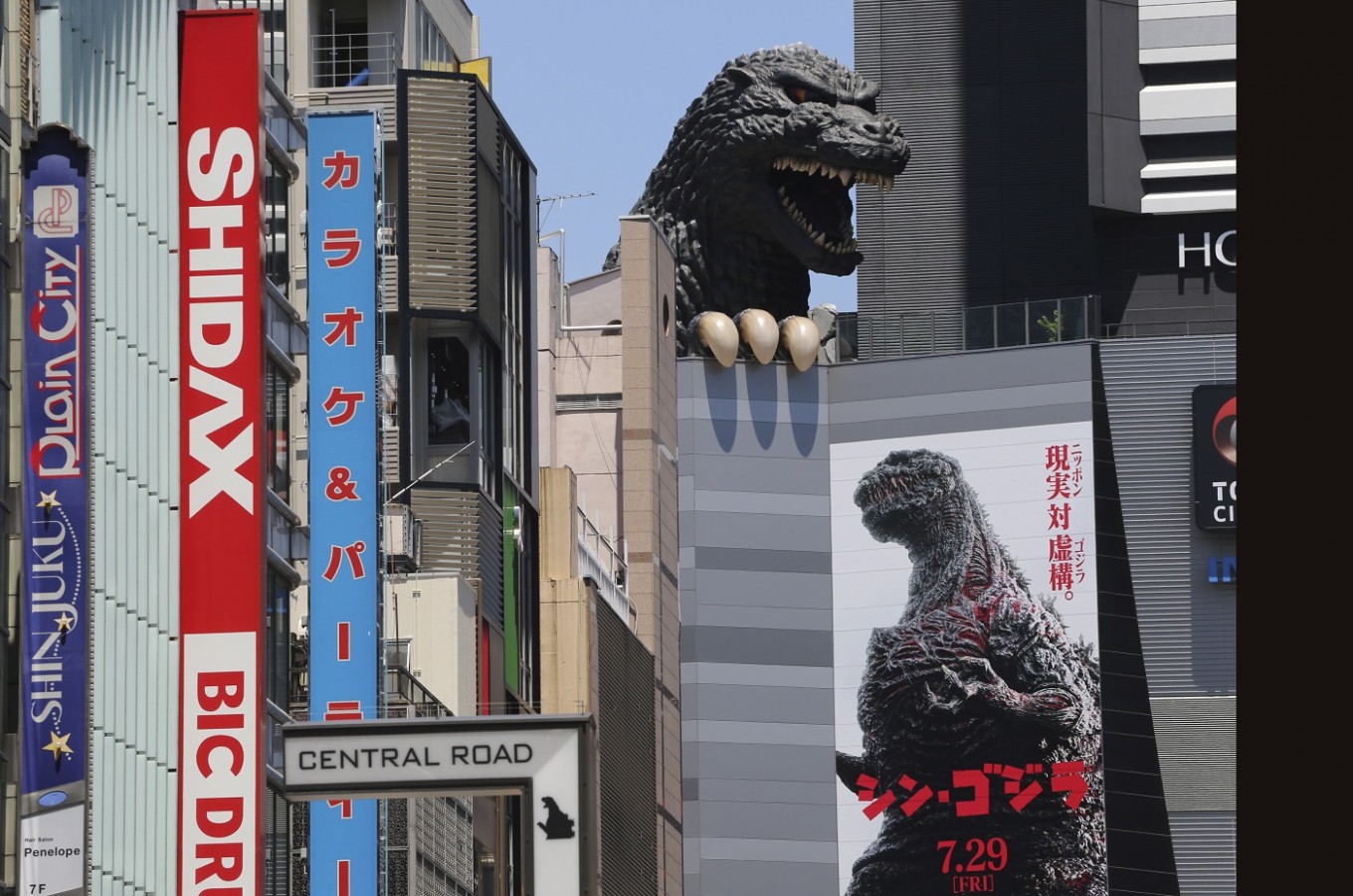Popular Reads
Top Results
Can't find what you're looking for?
View all search resultsPopular Reads
Top Results
Can't find what you're looking for?
View all search resultsGodzilla comes back to Japan, in ways fresh and familiar
Godzilla is back in its homeland of Japan after a 12-year absence, still breathing fire and mercilessly stomping everything in its way.
Change text size
Gift Premium Articles
to Anyone
G
odzilla is back in its homeland of Japan after a 12-year absence, still breathing fire and mercilessly stomping everything in its way. The Associated Press noted four ways the new film "Shin Godzilla," or "New Godzilla," breaks from its past, and other ways it is reassuringly familiar. It's now showing in theaters in Japan and is promised for the U.S. and other countries later this year.
___
WHAT'S DIFFERENT:
— The Americans: Japan's most important ally sends scientists and other advisers, their participation depicted at times as a nuisance. A Japanese-American special envoy, played impudently by Satomi Ishihara, asks where the nearest Zara store is, but mainly mediates between Japan and the U.S., which is worried Godzilla might reach its shores. She resists a U.S. proposal to nuke Godzilla. "Is Japan going to have the atomic bomb dropped for the third time?" she asks mournfully. Given that the 2014 Hollywood Godzilla helped Toho film studio decide to revive the series it originated, the U.S. has proved a true ally for Godzilla's silver screen survival.
— The man behind the monster: Godzilla is not a man wearing a rubber suit, like in the 1954 original. Toho used motion-capture technology based on the movements of Mansai Nomura, an actor in traditional Kyogen theater whose casting was a secret until opening day. The center of gravity is kept low during Kyogen moves, similar to Noh dance, except that Kyogen specializes in comedy. Nomura said he was honored to be chosen for the role, stressing that he hoped to communicate the spiritual and the ghostly in Godzilla. "I am thrilled that the DNA of Kyogen, which has more than 650 years of history, will now be part of the DNA of the pride of Japanese cinema — that life called Godzilla," he said in a statement.
— The 2011 Fukushima disaster: Godzilla is no longer a result of nuclear testing. Instead, the monster recalls the March 2011 quake, tsunami and nuclear disaster that devastated northeastern Japan. In the film, people measure the radiation around them and share information on social media, as they did five years ago. News conferences and meetings are filled with confusion and jargon, and government officials on screen even use the same word that was used to describe how unprepared Japan had been for the tsunami, "soteigai," or "beyond expectations." Scenes of people fleeing from torrents of water, and later huddled in gymnasiums, bring back heartbreaking memories of the 2011 disaster.
(Read also: Japan's 'Godzilla' director wants to surprise)
— Defending itself: Post-World War II Japan has repeatedly stressed it will abide by pacifism. When Godzilla crashes onto its shores, Japan debates how far it can go in defending itself. That reflects a modern debate over using Japan's military beyond its self-defense role. Bureaucrats try their best to find Japanese-based solutions, treating Godzilla as a crisis requiring military might and vowing the nation can be rebuilt from scratch — as it was after World War II. The original monster symbolized the tragedy of nuclear power and, through it, the ability of humankind to destroy itself. Now the threat we perceive could be anything, but is almost certainly a horror we brought on ourselves.
___
WHAT'S FAMILIAR:
— The monster: Godzilla at first looks like a snake or an eel slithering through the cityscape. Nearly an hour into the movie, it stands upright like the Godzilla we know, with protruding scales lining its back and a giant tail lashing uncontrollably. As it was, with the way the 1954 original was scripted, Godzilla is more about our anticipation, the nightmare that reflects our deepest fears. The new Godzilla glows red as though embers electrified by atomic power flicker beneath its jagged skin.
— The destruction: The new film is inspired by the storyline of the 1954 original, more than the rest of Toho's 28-film series that had Godzilla battling oversized moths, evil robots and other fantastic creatures. It smashes the same landmarks as all the other Godzillas, such as Tokyo Station, the Parliament building and the Wako department store with the clock tower. And all that the masses of people can do is run from it in sheer terror.
The sounds: That same eerie screech, created by scratching contrabass strings, is heard. And this film pays homage to the original music. When the credits roll, with Nomura's name closing the 329-strong actors' lineup, it's the same composition by Akira Ifukube that plays, a fitting ending for the Japanese comeback Godzilla.











